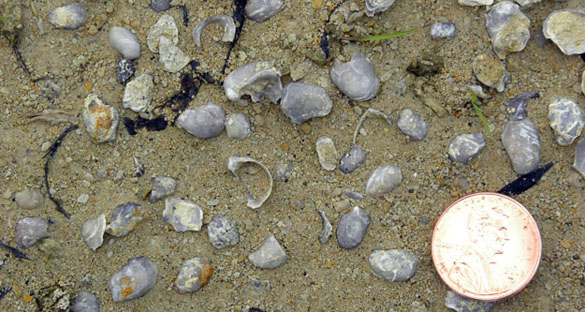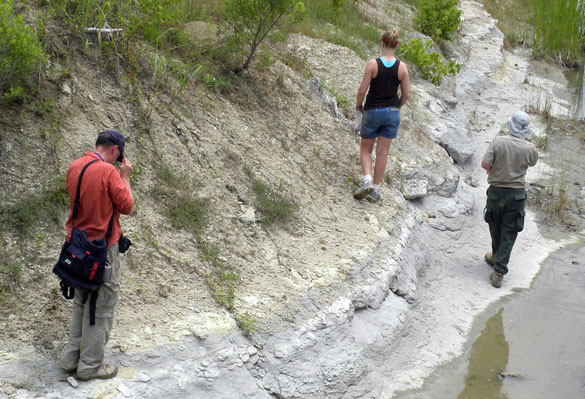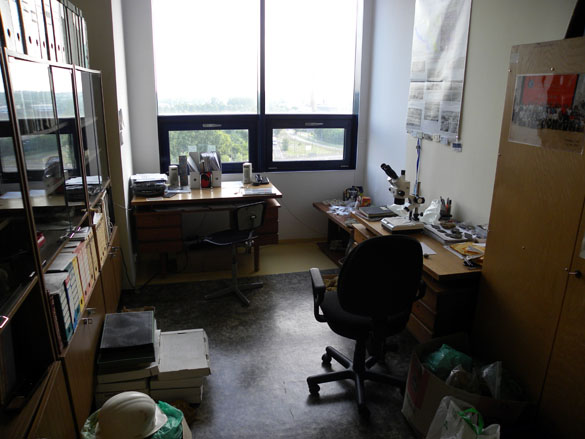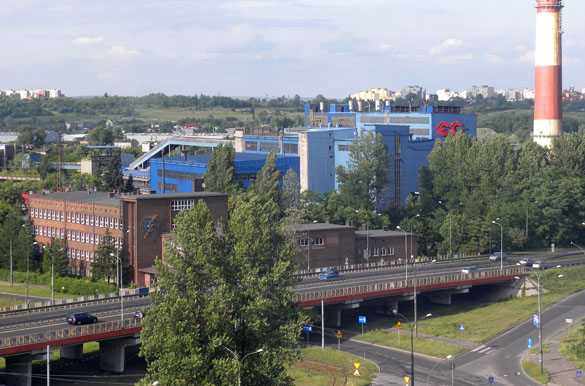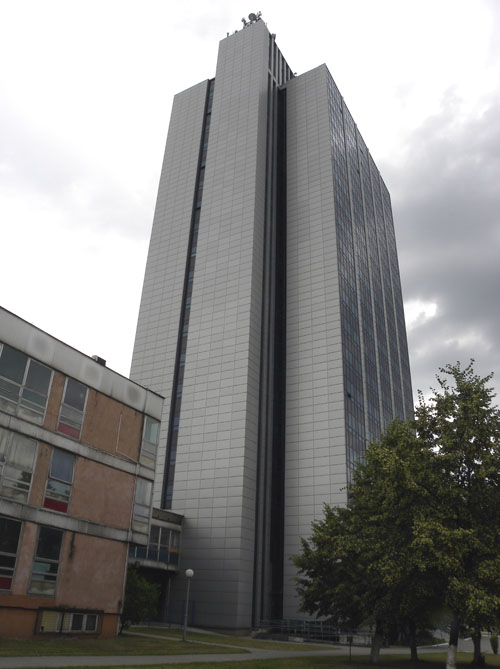 KURESSAARE, ESTONIA–It is always a joy to begin the fieldwork for an Independent Study project — or at least know what the fieldwork will be. This morning we visited the Soeginina Cliff locality on the Atla Peninsula of western Saaremaa and it was all we hoped it would be. Nick Fedorchuk (pictured above as a happy man with his outcrop) studied the literature about this locality during his Junior Independent Study period last semester. We confirmed today that the rocks are indeed auspicious and will work as the basis of his research.
KURESSAARE, ESTONIA–It is always a joy to begin the fieldwork for an Independent Study project — or at least know what the fieldwork will be. This morning we visited the Soeginina Cliff locality on the Atla Peninsula of western Saaremaa and it was all we hoped it would be. Nick Fedorchuk (pictured above as a happy man with his outcrop) studied the literature about this locality during his Junior Independent Study period last semester. We confirmed today that the rocks are indeed auspicious and will work as the basis of his research.
This locality is significant because it records a time and rock boundary in the geological record. The lower portion belongs to the Wenlock Series in the Silurian System, and the upper portion is in the Ludlow Series of the Silurian. They are separated by a disconformity (an erosional horizon indicating a hiatus in the geological time record). Boundaries such as this are always interesting because they can be correlated across the globe with other rocks formed at the same time. We want to better understand what was happening in Baltica at this junction between the Wenlock and Ludlow, and then compare it to the equivalents in Sweden, Britain and North America.
 The boundary rocks show a laminated unit in the uppermost Wenlock (Rootsiküla Stage) that has been interpreted as lagoonal in origin, and then a more massive limestone in the lowermost Ludlow (Paadla Stage) with oncoids (microbial accumulations) and eventually shelly beds thought to be more open shallow marine deposits. The division between them appears to be marked by a mineralized layer (see image below). Later Nick will collect rock and fossil samples to thoroughly describe this interval and sharpen the paleoenvironmental and paleoecological hypotheses.
The boundary rocks show a laminated unit in the uppermost Wenlock (Rootsiküla Stage) that has been interpreted as lagoonal in origin, and then a more massive limestone in the lowermost Ludlow (Paadla Stage) with oncoids (microbial accumulations) and eventually shelly beds thought to be more open shallow marine deposits. The division between them appears to be marked by a mineralized layer (see image below). Later Nick will collect rock and fossil samples to thoroughly describe this interval and sharpen the paleoenvironmental and paleoecological hypotheses.
 Rachel Matt (below) does not yet know which outcrop will be the focus of her research, but we will soon!
Rachel Matt (below) does not yet know which outcrop will be the focus of her research, but we will soon!
 Our last visit of the day was to Kaarma Quarry and its exposed laminated lagoonal limestones and dolomites of the Ludlow. You can see below the team in action — and what a beautiful day it was.
Our last visit of the day was to Kaarma Quarry and its exposed laminated lagoonal limestones and dolomites of the Ludlow. You can see below the team in action — and what a beautiful day it was.





